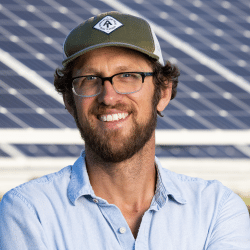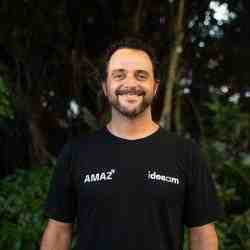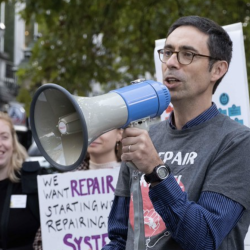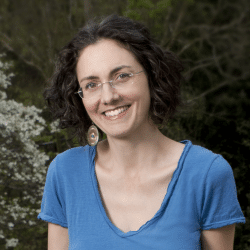Peace First
https://www.peacegames.orgIntroduction
In many of America’s schools, violence poses a significant threat to children’s safety and performance in class. Eric Dawson is counteracting this with a program that engages youth in peacemaking and conflict resolution. Peace Games brings together students, teachers, and volunteers to collectively change the status quo and reject violence as an inevitable presence on school playgrounds.
The New Idea
Violence in U.S. schools continues despite all efforts to prevent it. When Eric realized that no one was engaging children as part of the solution to this problem, he developed Peace Games to teach children how to create peacemaking strategies to resolve conflicts and promote peace in ways relevant to their daily lives and experiences. Rather than policing violent behavior, Peace Games provides a way for children to learn and live the values of peace and empathy from an early age.
Eric understood that violence is much more than fighting, guns and gangs. It is entangled in deep-seated societal issues such as racism and homophobia. He decided that the best way to prevent violence was to teach peace—in the classroom, the hallways, the lunchroom, the schoolyard, at home and in the neighborhood. Peace starts with kindness, understanding and respect. Eric’s goal is for children and adults to work together to create a culture of peace in and beyond their school. When children enlist the help of the adults in their lives to learn, practice and promote peacemaking, everyone gains a safer, more supportive community in which to live.
Eric’s vision is for children to be able to create and nurture a culture of caring, respect and cooperation, and to leave school prepared to be engaged community members. As these children mature, Eric believes they will carry peacemaking values with them, replacing violence with peace and intolerance with inclusion. When peacemaking is part of the fabric of every child’s education, Eric believes children in every community will have the skills to resolve conflicts, work across differences, and build a world worthy of their children.
The Problem
In the U.S. alone, more children die each year from gunfire than from cancer, pneumonia, influenza, asthma, and AIDS combined. The Centers for Disease Control reports that the rate of firearm deaths among children under age fifteen is almost twelve times higher in the U.S. than in twenty-five other industrialized countries combined. Seventy percent of Americans believe that a shooting is likely in their neighborhood school. The 2000 Gallup Poll of attitudes toward public schools found school violence and discipline among the top five pressing educational problems.
A 1996 to 1997 Department of Education survey defines school violence as, “All behaviors that create an environment in which students, teachers, and administrators feel fear or intimidation in addition to being victimized by physical assault, theft, or vandalism.” While incidents like Columbine gain national attention, the public is less aware of the daily intimidation and threat of violence that creates a climate of fear for school children. About 3 million thefts and crimes happen on or near school campuses each year (1 incident every 6 seconds); 1.9 million of these involve violence. Every day in America, over 160,000 kids miss school because they are afraid of being shot, stabbed, or beaten. Seventy-four percent of children aged eight to eleven ranked teasing and bullying at school as a greater concern than AIDS or the pressure to try alcohol and drugs. The psychological, educational, and economic impacts of youth violence and disengagement are enormous. When private, local, state, and federal funds are combined, over $3 billion is spent annually on programs addressing school safety.
Studies show that the most effective way to curb violence is early, long-term investment in the social-emotional development of young people. Students who learn psychosocial skills outperform students of equal intelligence who lack these skills. While policymakers focus on standards and testing to improve academic achievement, they overlook a critical factor: Children who do not feel safe do not perform well in school. The Vermont/National Education Association school violence report states: “We must make it clear that violence is unacceptable as a way to control others and resolve conflict, but we must give children alternative strategies that will be successful.” However, few schools have the resources needed to integrate violence prevention and peacemaking into their academic program and school culture.
The Strategy
Peace Games (PG) is designed to change the school climate by building the capacity of the entire school community to improve peacemaking skills and behavior (e.g. communication, cooperation, and conflict resolution) and reduce peacebreaking behavior (e.g., verbal and physical fights, disruptions, bullying and bringing weapons to school). The heart of the program is a PreK-8 curriculum integrated into the academic framework of the school. Starting at age four, the nine-year program engages children as leaders with adults in supporting roles. PG teachers are volunteers (e.g., AmeriCorps members, college students, work-study interns)—so youth are leading youth to create a peacemaking culture. In a weekly classroom period, children learn to devise their own peacemaking strategies. The volunteer teachers work in partnership with classroom teachers, modeling PG methods that facilitate experiential learning and constructive group processes. Cooperative games and activities help children learn empathy, how to resolve conflicts, and how to work well in teams.
In each grade, the first semester is classroom-based; in the second semester students’ work on community improvement projects that they design and lead with some adult guidance. Projects include reclaiming gang-tagged buildings, building community gardens, and launching recycling programs. At each grade level, children learn skills appropriate to their social and emotional development. The youngest children learn to recognize and talk about feelings, help each other and cooperate. Students in grades three to eight develop leadership skills such as taking a stand on issues and resisting peer pressure. Using games, role plays, discussion and service projects, children learn new ways to diffuse difficult situations—whether expressing anger with words, not violence, or walking away from fights. Peace Games is especially effective for schools that want to build their long-term capacity to prepare thoughtful, engaged citizens, and with that, achieve improved attendance, test scores, and more positive behavior. But they must be willing to put in the time and energy. To determine whether the school has a problem that PG can help solve, and will be a strong partner, PG surveys school staff (using a protocol they developed with Harvard’s School of Education). To achieve true culture change the principal and at least 85 percent of the teachers must want to adopt the program. Each school contributes 10 to 25 percent of the $100,000 cost. (Peace Games’ $2.5 million budget includes support from schools and cities.) To facilitate adoption, the PG program meets state-mandated requirements for curriculum and school improvement plans. The pre-adoption survey that establishes baseline data on student behavior, teacher support, school climate, and family involvement is administered at the beginning and end of each year. Change in school climate is seen in improved peacemaking skills and behavior and reduced peacebreaking incidents and behavior. Studies by Harvard and others found that 96 percent of PG students include others in their group rather than forming cliques; 91 percent improved academic performance; 84 percent improved attendance; 82 percent were seldom threatened or pushed. One of the studies showed a 60 percent decline in disruptive incidents. On the streets of Los Angeles where the Bloods and Crips are engaged in gang warfare, students wearing Peace Games t-shirts are allowed safe passage.
Peace Games moves schools from intense support to self-reliance through a “front-loaded” strategy. A full-time site coordinator selected by PG and the principal is placed in each school for the first 3.5 years. The coordinator leads a schoolwide assessment and planning process, then supervises the volunteer teachers as they implement the program in each grade level. The site coordinator also works with a Leadership Team of parents, school staff, and community members. Peacemaking is integrated into everything the school does. Peace Games signs, photos, and language build and convey a school-wide culture. In year four, schools start offering the program independently, aided by ten to twenty hours of PG coaching each month. Eric credits Peace Games’ success to five factors: It’s universal, whole-school intervention; all students participate for nine years; the curriculum is fun (playing games develops community-building skills); every adult in the school is engaged, from the cafeteria workers to the principal; and, families get involved in their child’s school.
As of 2008, twenty schools in three U.S. cities have adopted Peace Games’ “intensive school change” model. Each of three regional offices—in Boston, Los Angeles, and New York—is a center of innovation and training with a small core staff, a large volunteer force, local funding, and the support of elected officials and the board of education. In Boston, the Mayor’s violence reduction plan calls for PG to serve 100,000 more students, opening one to two new schools a year. Los Angeles’ Mayor asked the University of Southern California (USC) to partner with PG to serve twelve schools (17,000 students) in a 7-square-mile area. USC will provide funding, interdisciplinary engagement, and student volunteers. Starting in 2009, Peace Games will bring the program into high schools for the first time. Working with schools located near each other will offer opportunities for economies of scale. Former PG staff members comprise a national network of trainers ready to help launch new sites. Peace Games’ ten best practices are the core of a new train-the-trainers program. Through Peace Games’ training and technical assistance program, schools in Chicago and violence-torn areas of Colombia are using the PG curriculum with success. And, PG trains all of the youth workers hired by the city of Boston as well as Boys and Girls Clubs and other youth-serving organizations.
To raise awareness of youth who are transforming their communities, PG is creating a national children’s Peacemaker award (the “Nobel Peace Prize” for children). Starting with a citywide award in Boston, Eric expects that mayors across the country will want to offer the award. Another project, TeachPeace.net, will get the program out to new communities and create a global affinity group.
The Person
Eric Dawson was inspired to serve at an early age through the model of his parents who both did program evaluation for high-risk youth programs in Columbus, Ohio. (Eric is probably the only sixteen-year-old who spent his summers designing logic models and doing program evaluation.) Eric’s grandmother Katharine, ran a Brownie troop for blind children and tutored in city schools. Eric struggled as a child with his own experience with violence and feeling unsafe. This struggle fueled his commitment to ensuring that all young people have the power to be peacemakers.
Eric’s entrepreneurial spirit started young. He launched his first business as a ten-year-old, selling lollipops in his elementary school, until the school shut him down. Eric took his lunch money and went grocery shopping, putting the difference into a college account he opened on his own. At fourteen, he founded a talent agent and did commercials, which paid for his first two years of college. When students with disabilities became the object of ridicule at his high school, Eric and some friends started an organization to change student attitudes. (Eric was the only founder without a family connection to a person with a disability.) During college, Eric spent two summers running a camp in a public housing project. Living on site, he saw the daily impact of violence on young people and how many felt they had no other choice.
Eric won a scholarship to Harvard University, where his many jobs included bartending, cleaning refrigerators at the Observatory, and serving as the driver for the author of Curious George. Through Harvard’s student volunteer association, Eric developed Peace Games into a year-long conflict resolution program serving 3,000+ Boston area youth. In 1996, at age twenty-two, Eric established Peace Games as an independent nonprofit with a mission to enable students to create their own safe classrooms and communities. Along the way he completed a MEd at the Harvard School of Education and began an MDiv at Harvard Divinity School. Today, happily married and father of two young daughters and a son, Eric, like thousands of children he’s served, enjoys peace.




